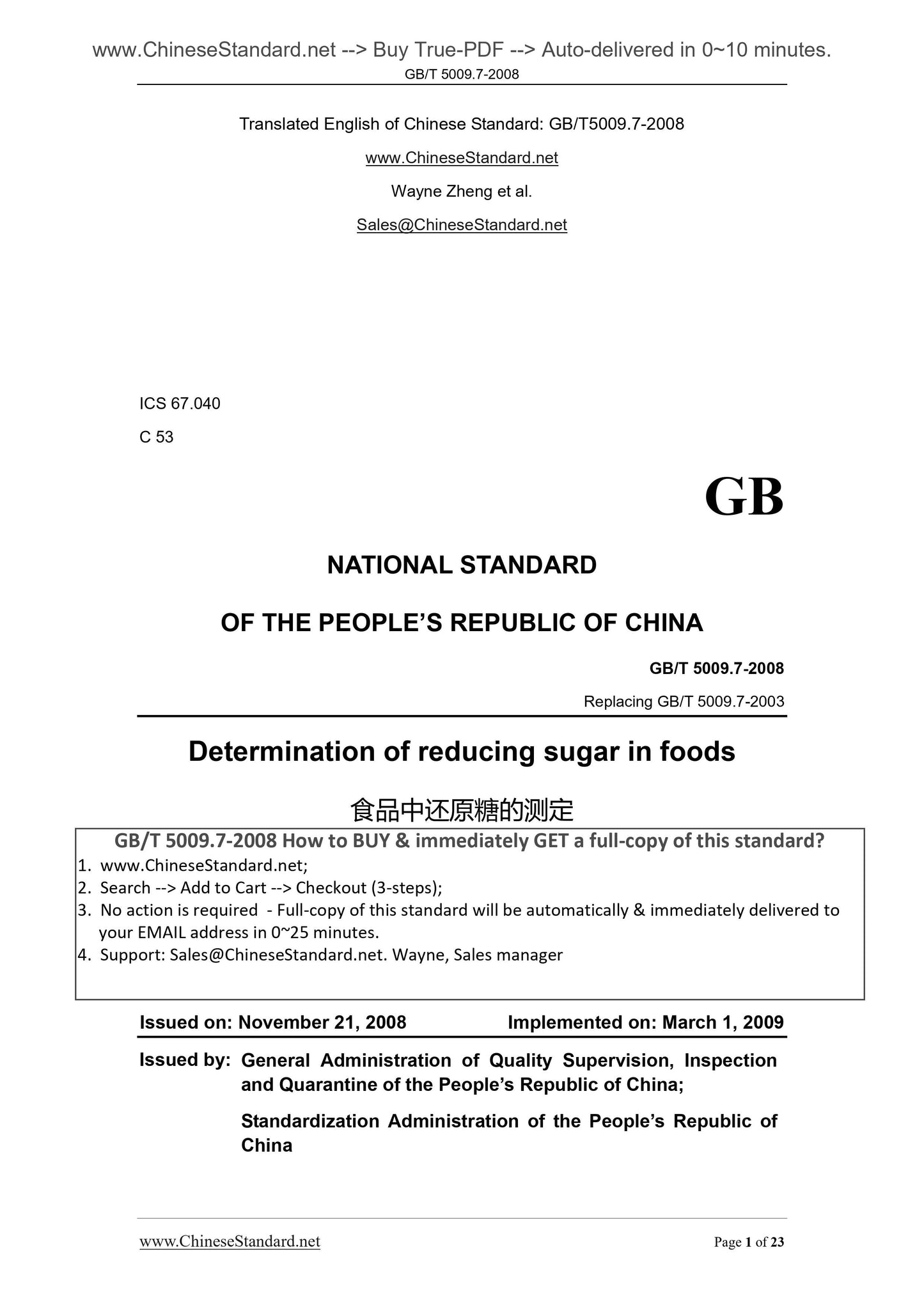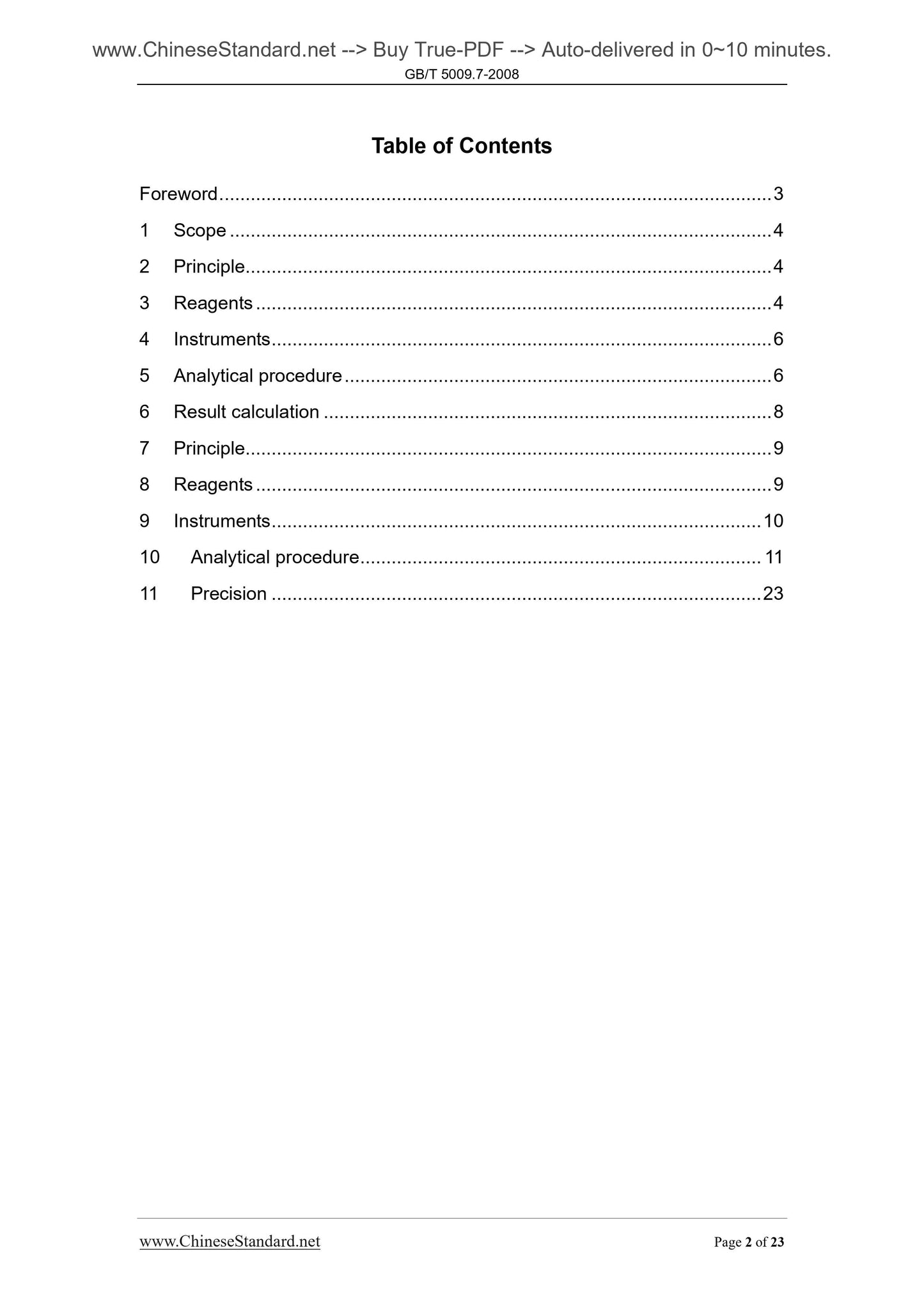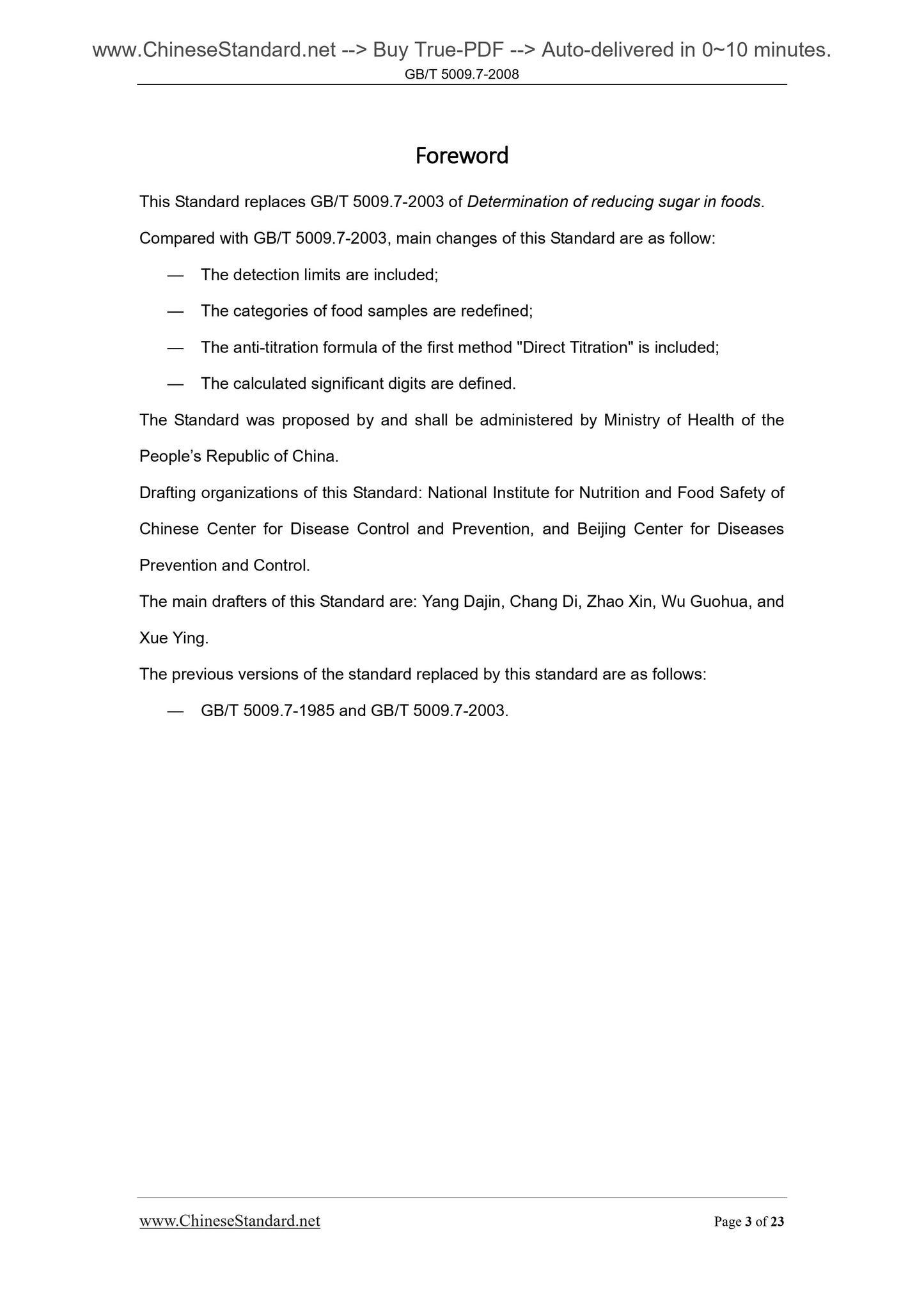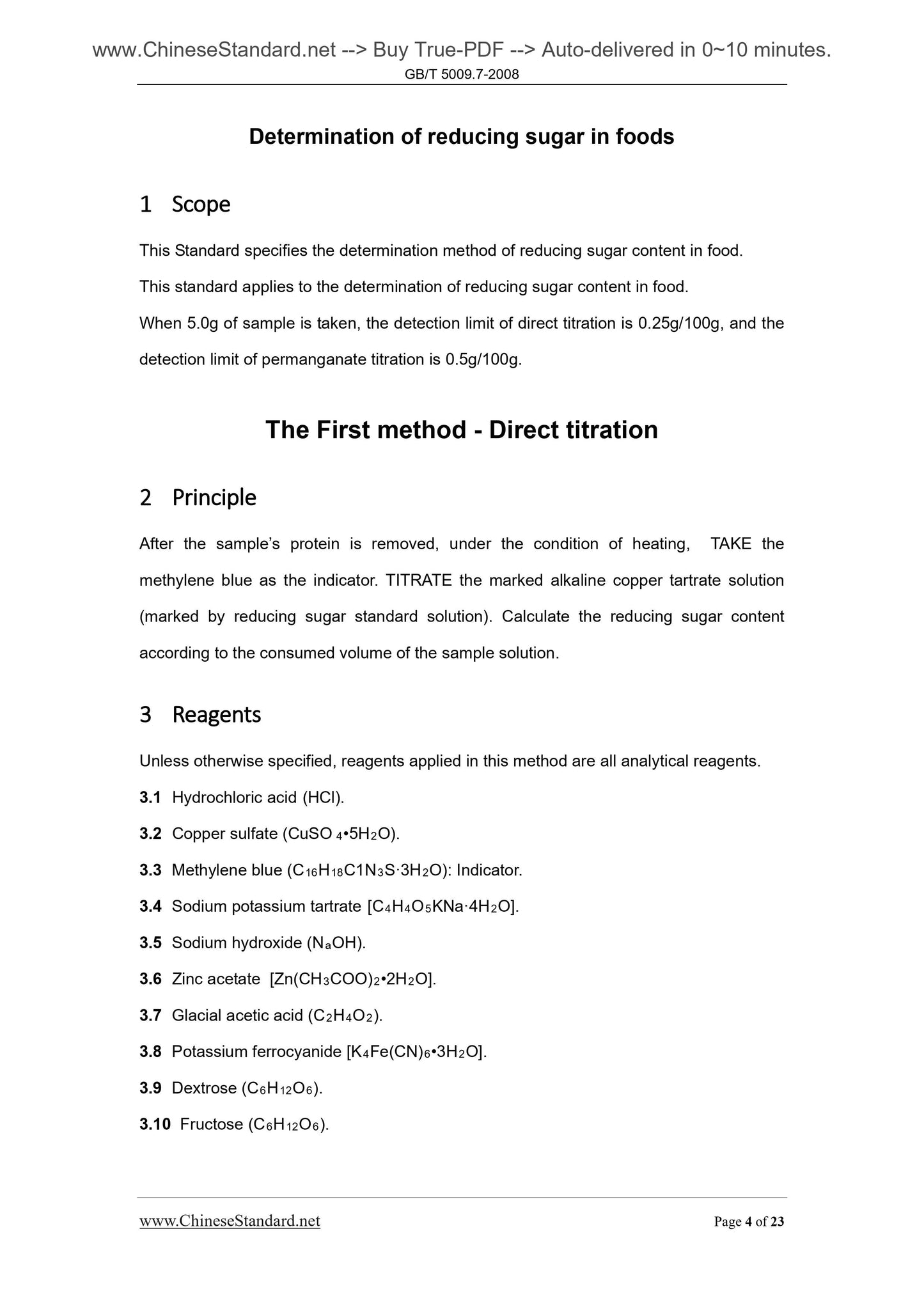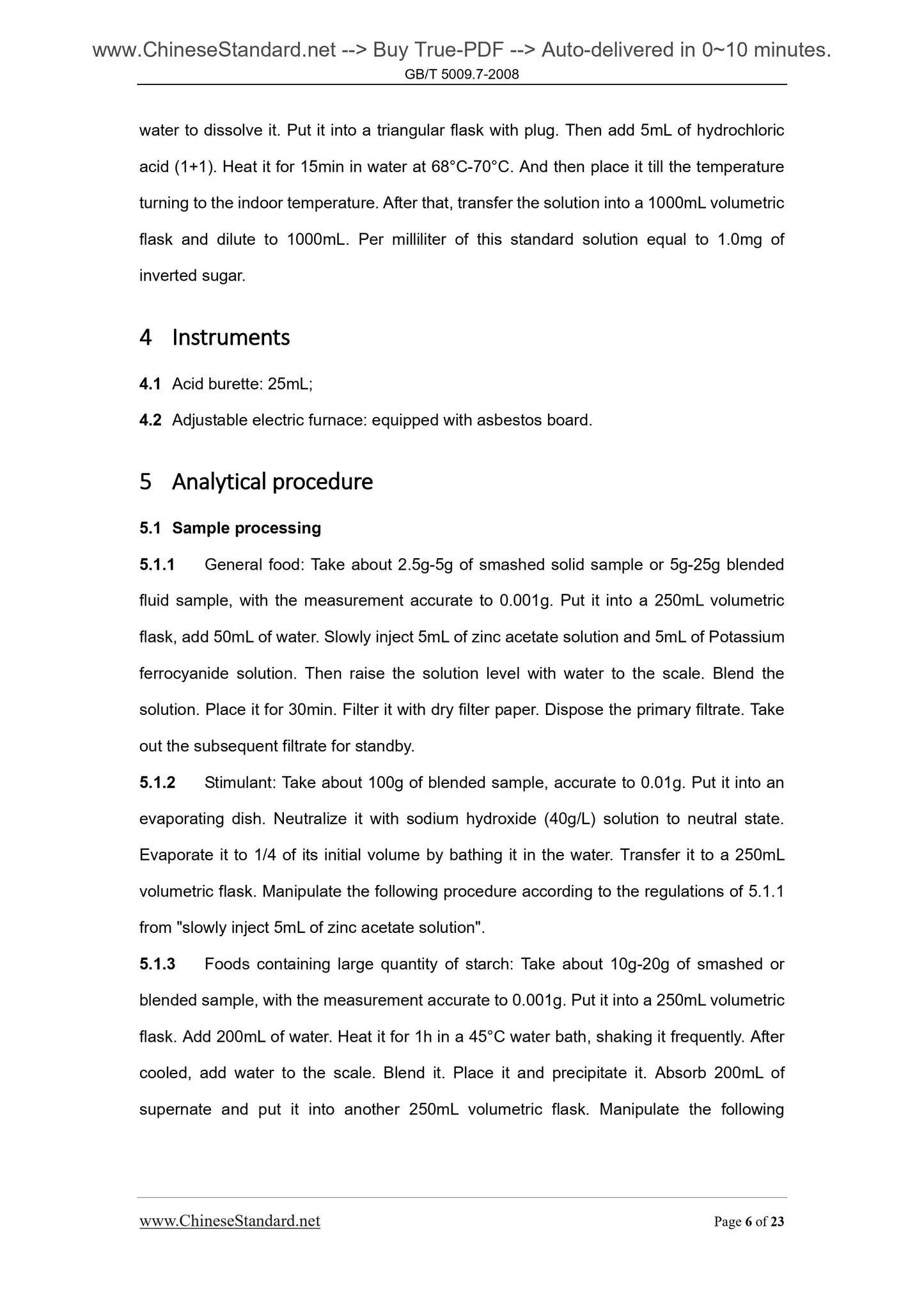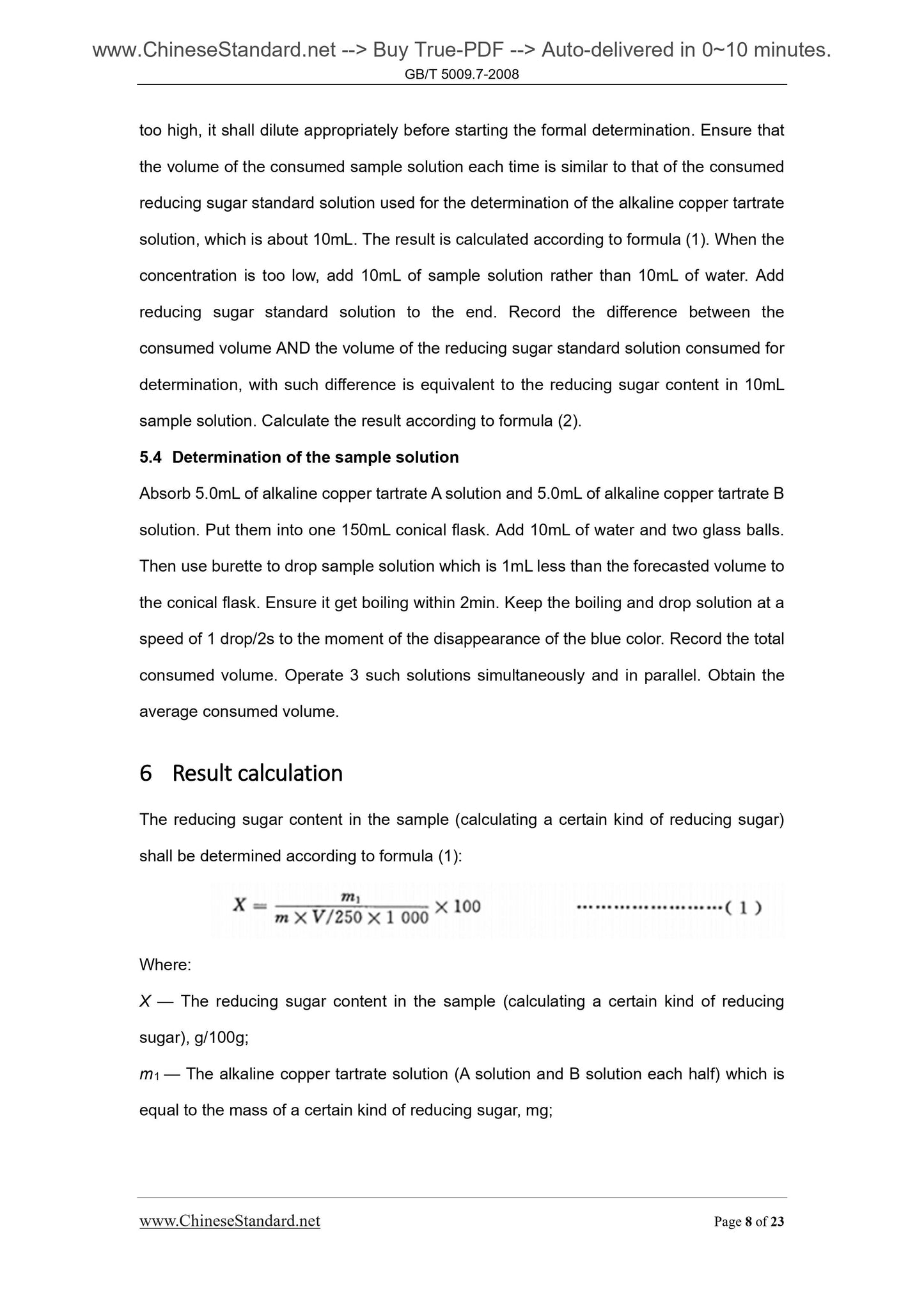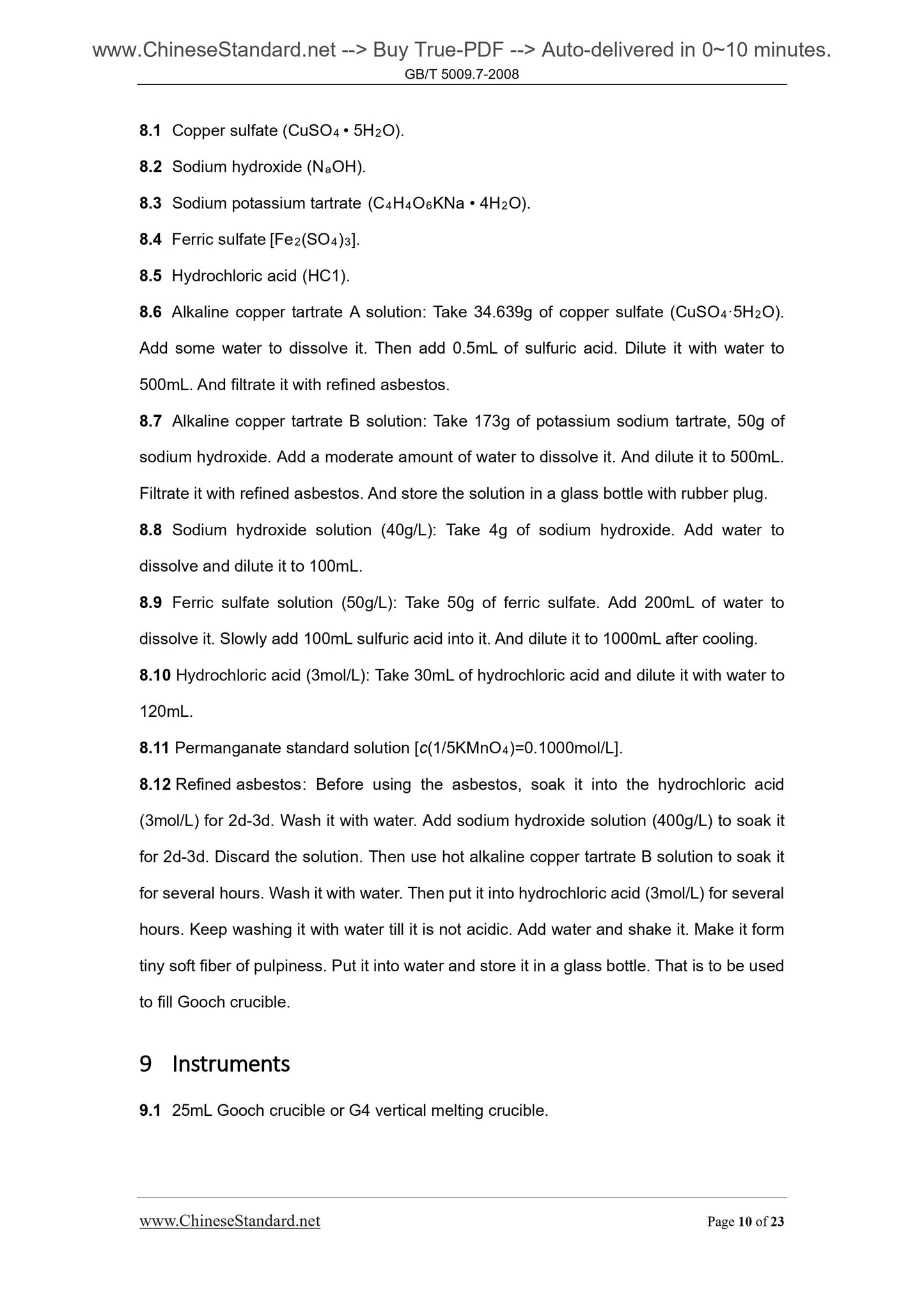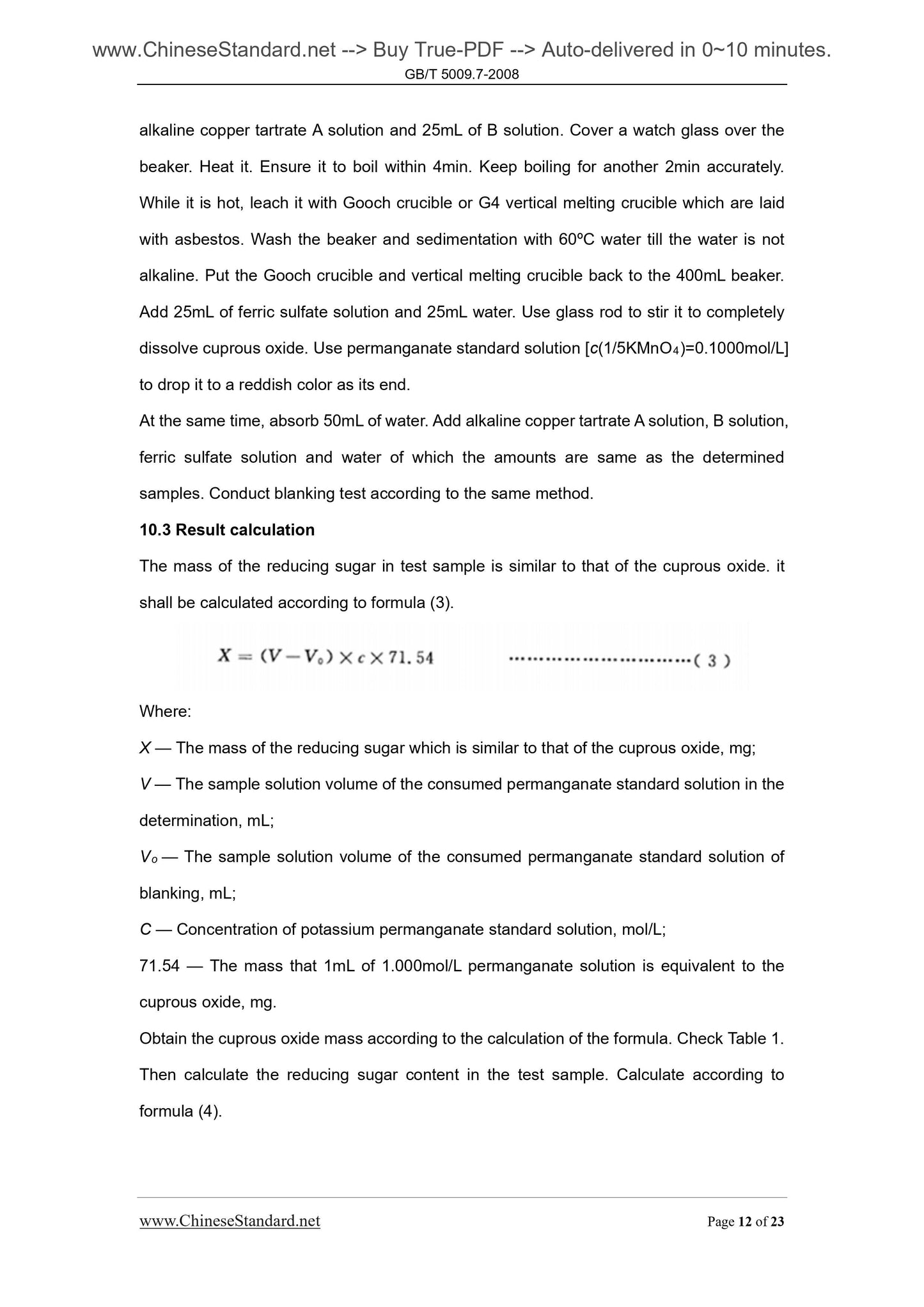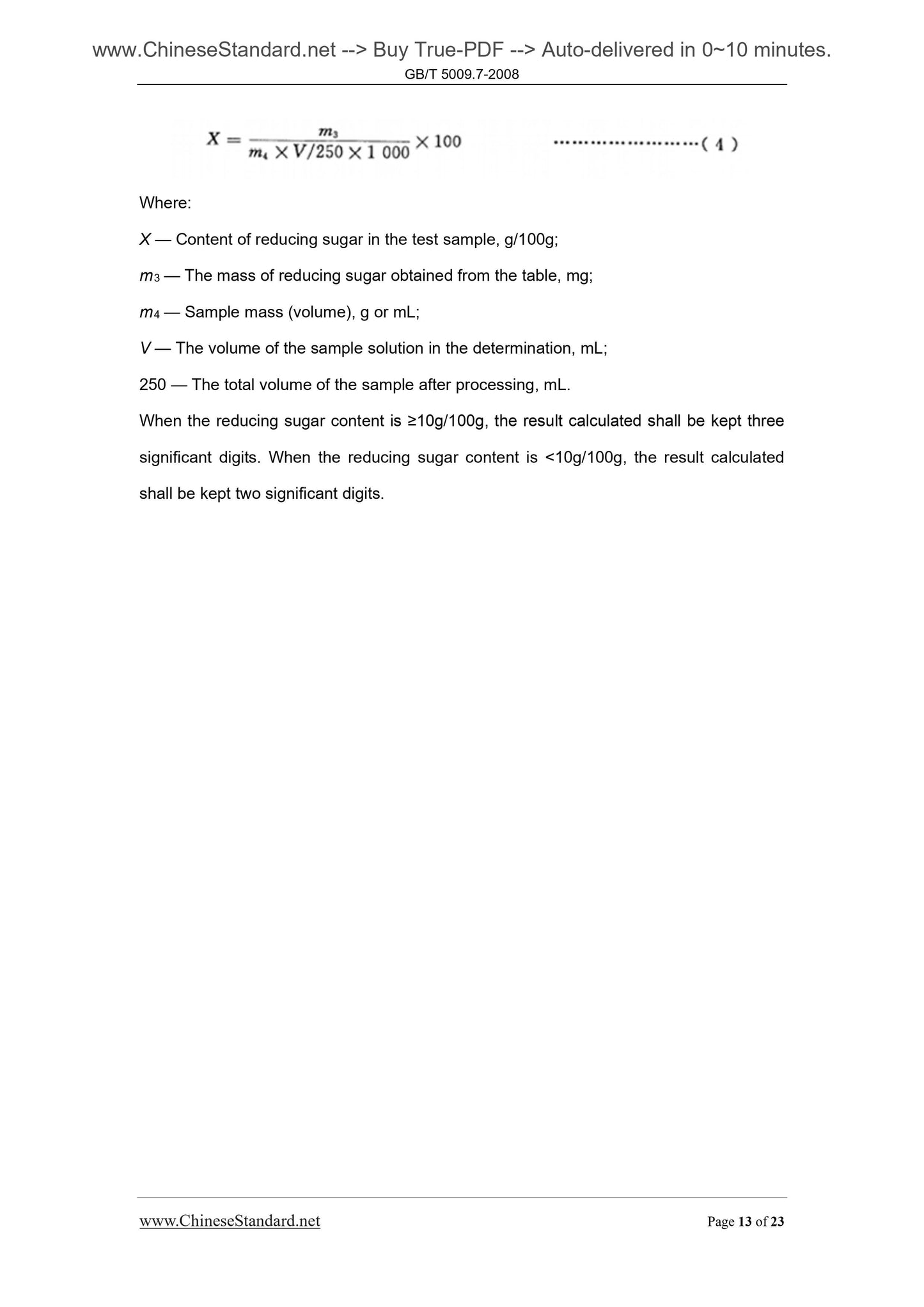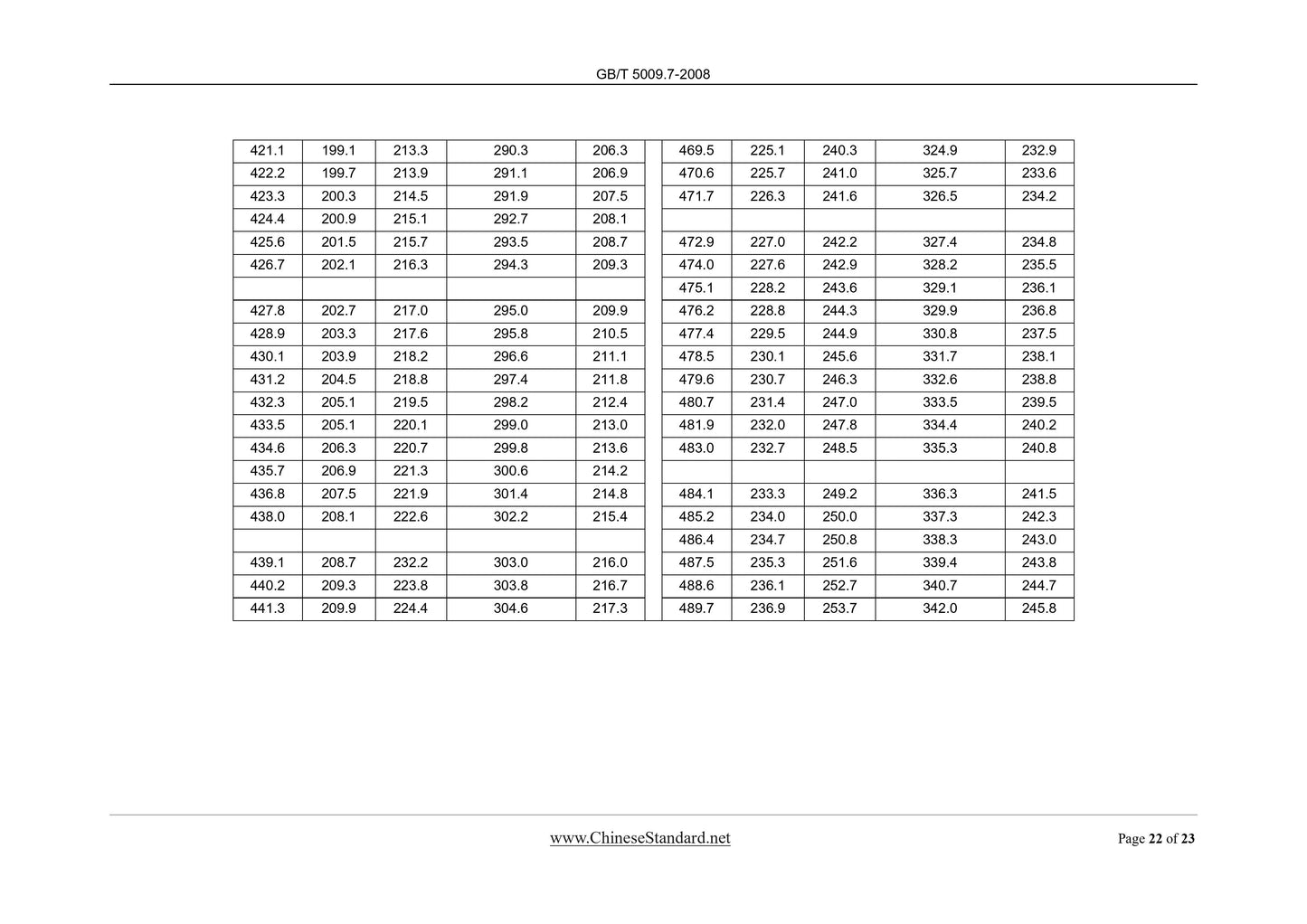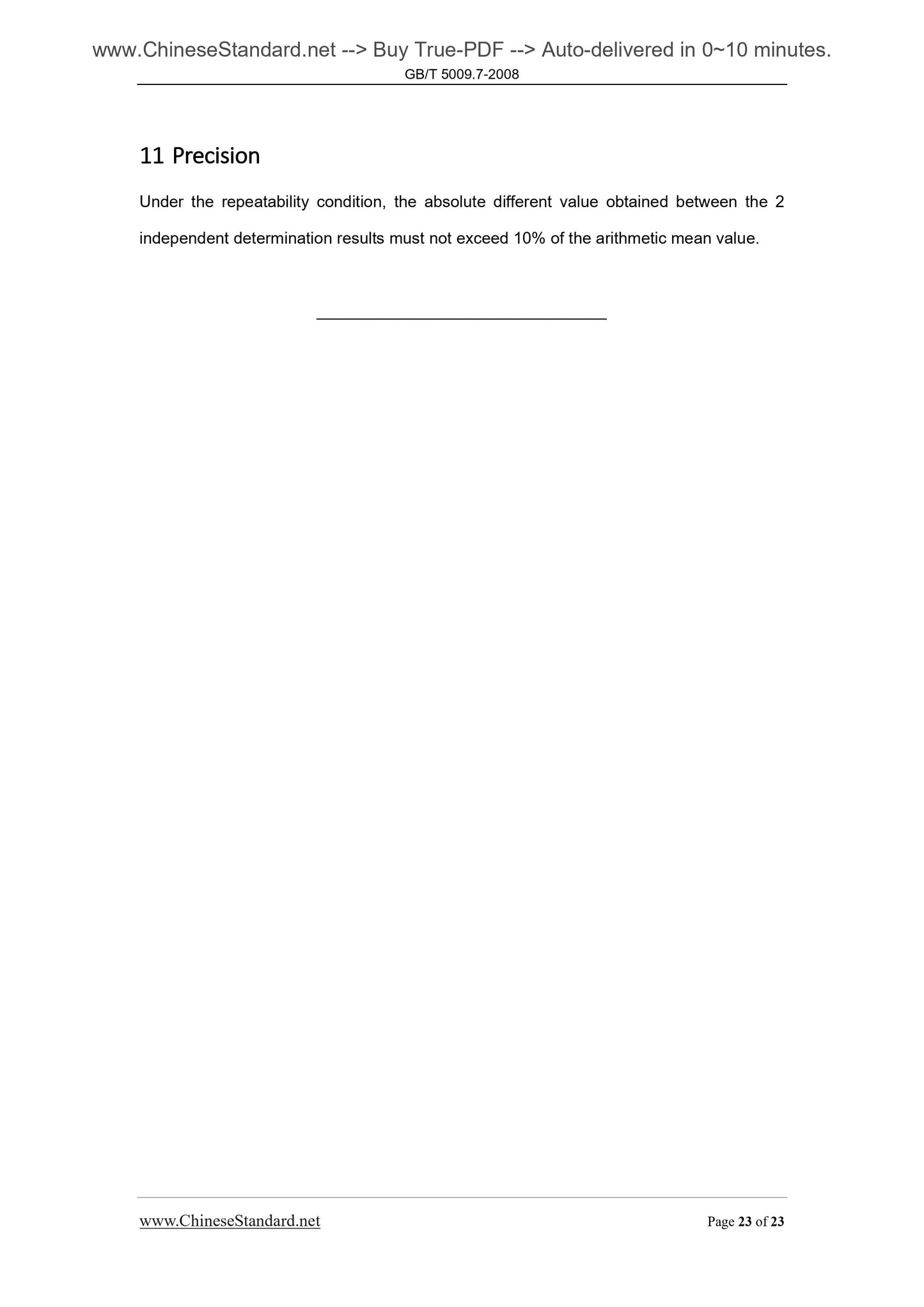1
/
of
11
PayPal, credit cards. Download editable-PDF and invoice in 1 second!
GB/T 5009.7-2008 English PDF (GB/T5009.7-2008)
GB/T 5009.7-2008 English PDF (GB/T5009.7-2008)
Regular price
$140.00
Regular price
Sale price
$140.00
Unit price
/
per
Shipping calculated at checkout.
Couldn't load pickup availability
GB/T 5009.7-2008: Determination of reducing sugar in foods
Delivery: 9 seconds. Download (and Email) true-PDF + Invoice.Get Quotation: Click GB/T 5009.7-2008 (Self-service in 1-minute)
Newer / historical versions: GB/T 5009.7-2008
Preview True-PDF
Scope
This Standard specifies the determination method of reducing sugar content in food.This standard applies to the determination of reducing sugar content in food.
When 5.0g of sample is taken, the detection limit of direct titration is 0.25g/100g, and the
detection limit of permanganate titration is 0.5g/100g.
The First method - Direct titration
Basic Data
| Standard ID | GB/T 5009.7-2008 (GB/T5009.7-2008) |
| Description (Translated English) | Determination of reducing sugar in foods |
| Sector / Industry | National Standard (Recommended) |
| Classification of Chinese Standard | C53 |
| Classification of International Standard | 67.040 |
| Word Count Estimation | 13,182 |
| Date of Issue | 2008-11-21 |
| Date of Implementation | 2009-03-01 |
| Older Standard (superseded by this standard) | GB/T 5009.7-2003 |
| Regulation (derived from) | National Standard Approval Announcement 2008 No.22 (Total No.135) |
| Issuing agency(ies) | General Administration of Quality Supervision, Inspection and Quarantine of the People's Republic of China, Standardization Administration of the People's Republic of China |
| Summary | This standard specifies the method for determination of reducing sugar content of foods. This standard applies to the determination of reducing sugar content of foods. When the sample weight is 5. 0g, the direct titration method detection limit is 0. 25g/100g, potassium permanganate titration method detection limit of 0. 5g/100g. |
Share
